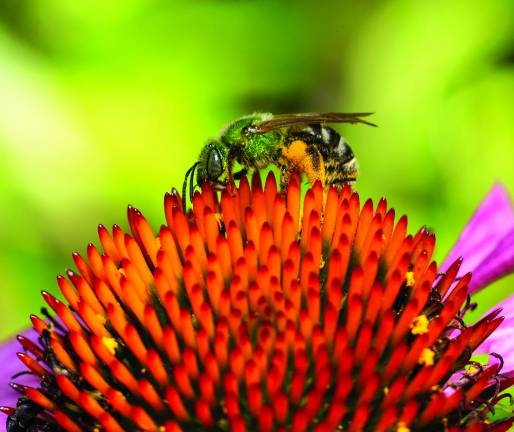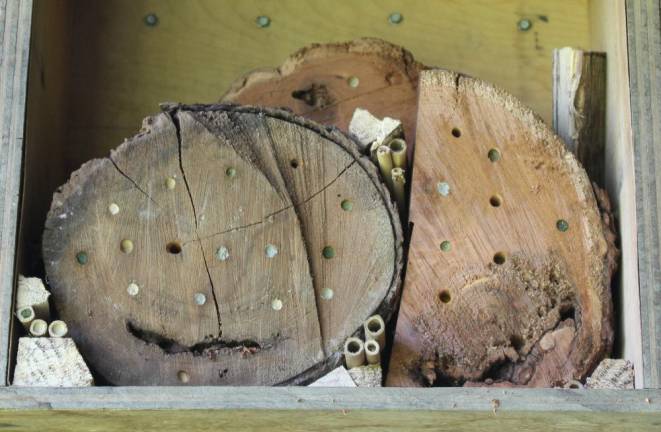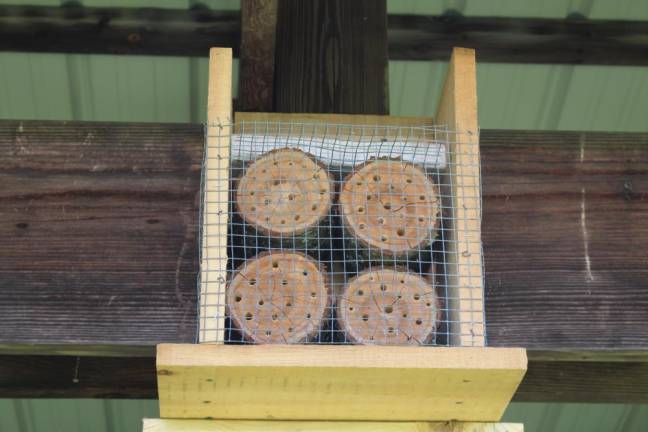The bees that were here first
Honeybees you know. Now meet our all-American pollinators.




Ever heard of a solitary bee? If not, you might guess it’s a bee that’s chosen to quit the regimented social order of the hive, opting instead for a solitary life on the open road — a “me” over “we” bee! There would be grains of truth in your guess. But there’s much more to it.
Before Europeans arrived, bringing with them very social honeybees, most of the bees in North America were, in fact, solitary, having evolved to be so over many millions of years. These native bees were the primary pollinators of wild plants as well as crops like corn, squash and beans grown by indigenous Americans. They played a vital role in the terrestrial ecosystem. Today, though greatly reduced in number, overlooked, underappreciated and often unrecognized, they still do.
There are close to 4,000 species of native bees remaining in North America. Approximately 90 percent of them are solitary. The other 10 percent are social, meaning, like the non-native honeybee, they live together and often delegate communal responsibilities based on gender and other factors. None of the natives produce honey. The well-known bumblebee is a native that chose the social path. Bumblebees live in colonies.
Solitary native bees vary in size, appearance, life cycles and habits. They do not swarm and very few of them sting — if they do, the sting is mild. The smallest native bee, Perdita minima, is just one-sixteenth of an inch long. The largest, the carpenter bee, Xylocopa spp., which is a social bee, is a gentle giant that can be a full inch in length with substantial girth. Some native bees are similar in appearance to honeybees; some look a bit like house flies; some have a blue or green metallic sheen. One human lifetime is probably not enough to know all the whys and ways of our native bees.
If you keep an eye out, several of the more common native bees you might encounter are mason bees, miner bees, digger bees, leafcutter bees and sweat bees. All are solitary. Their names often foretell their nest building practices. Mason bees use mud to build their nests. Miner bees create tunnels in which they lay their eggs. Digger bees dig nests in the soil. Leafcutter bees cut leaves into small pieces and use them to build cigar-shaped nests. Sweat bees are not named for their nest building skills but rather for their short tongues which, given an opportunity, may be used to lick human sweat. It seems they have a taste for it.
After mating, usually in late spring or summer, a female solitary bee sets about finding or building a nest. Often this will be in the form of a small, excavated burrow in the ground or in a tubular cavity in a tree or piece of rotting wood. Next, she lays a single egg, leaves it with a dollop of pollen and nectar and seals it off with mud. She repeats this process until, depending on her species, anywhere from several to 20 or more eggs are laid and secured. All the while she is providing critical pollinating services to flowering plants. Once egg laying is complete, the female goes on her merry way. Having fulfilled her procreative imperative, she does not return to the nest. Nor will she live much longer. As for the male solitary bee, his life is generally even shorter and has just one purpose — to mate. Take the male red mason bee, which lives just two weeks.
You will not see a native bee in the winter. It’s too cold for them but some stay alive by entering a state of reduced metabolic activity known as diapause, which is similar to hibernation. Those bees that died soon after egg laying can rest in the knowledge that the next generation is on its way. Their eggs will hatch, and proceed into the larval stage during which they will dine on the rich reserves of pollen and nectar left by their mothers. Next comes pupation when the shape and form of a bee develops. Metamorphosis is complete when the fully formed bee emerges from the nest.
Social or solitary, native or exotic, all bees are in trouble. Populations in North America and many other parts of the world have dropped precipitously over the past few decades. Entomologists give several reasons, among them habitat loss, pollution, disease, parasitic mites and extreme weather events. But perhaps the biggest threat of all is the widespread use of agricultural insecticides, especially those known as neonicotinoids, neonics for short. Neonics, developed in the 1990s by Bayer, are synthetic neurotoxins — they attack insects’ nerve systems, killing them. The trouble is they don’t just kill designated pests. They are equally deadly to bees and many other beneficial insects as well.